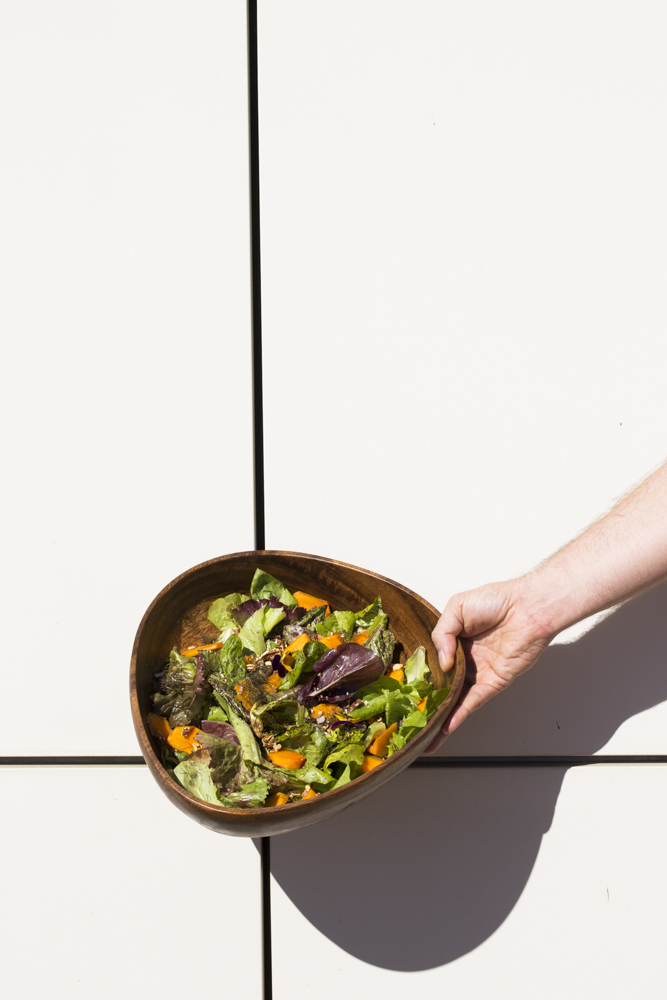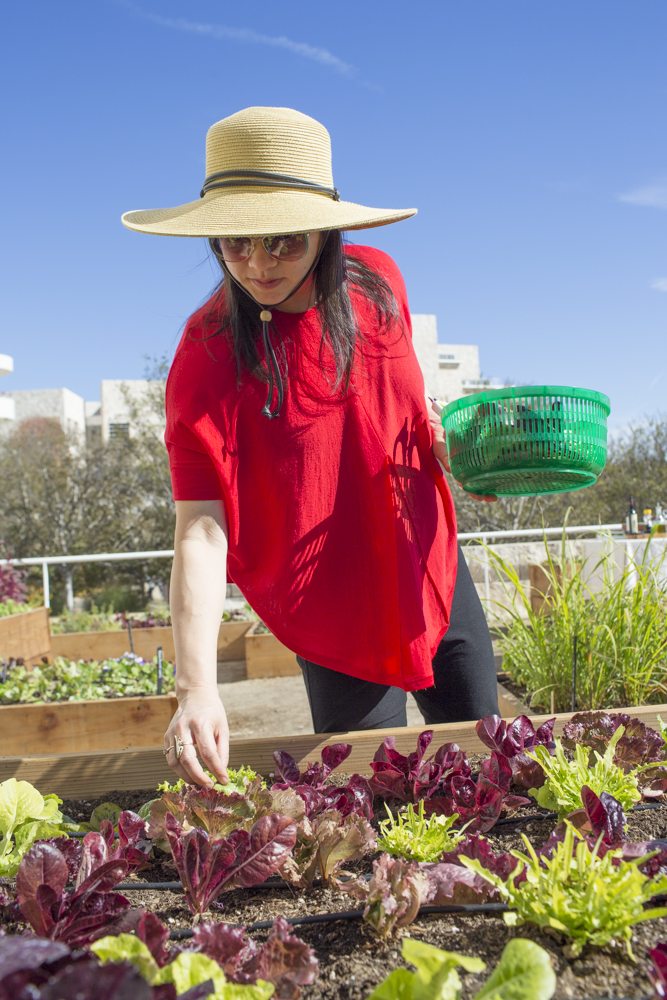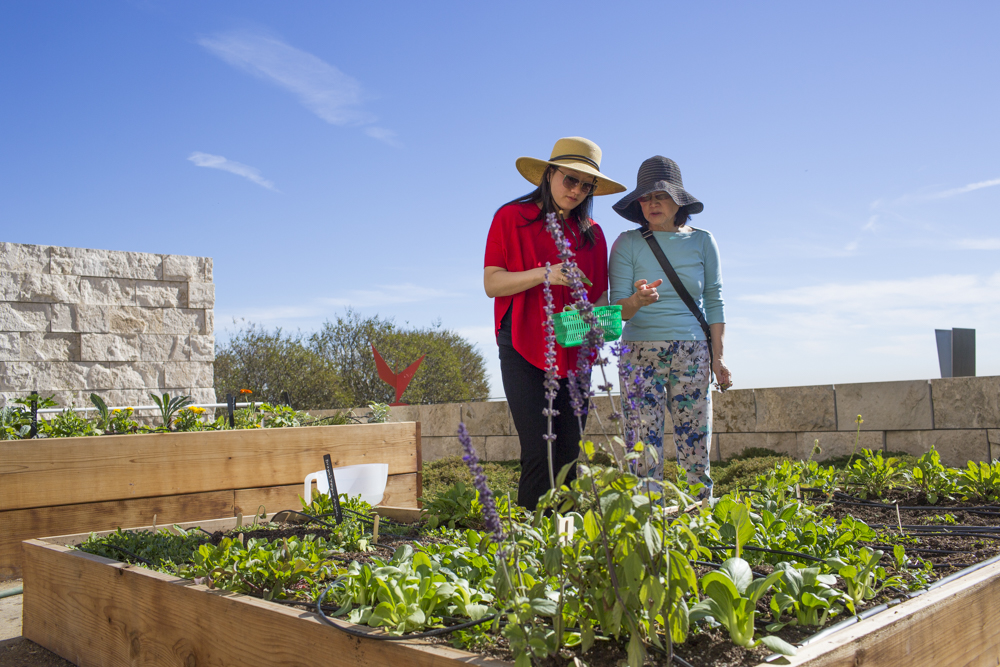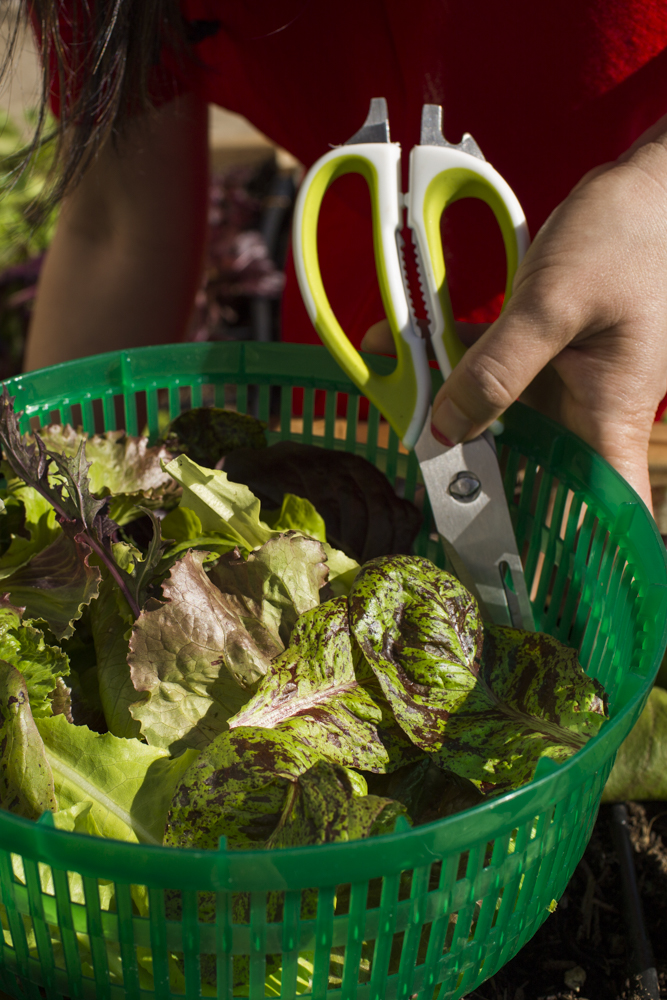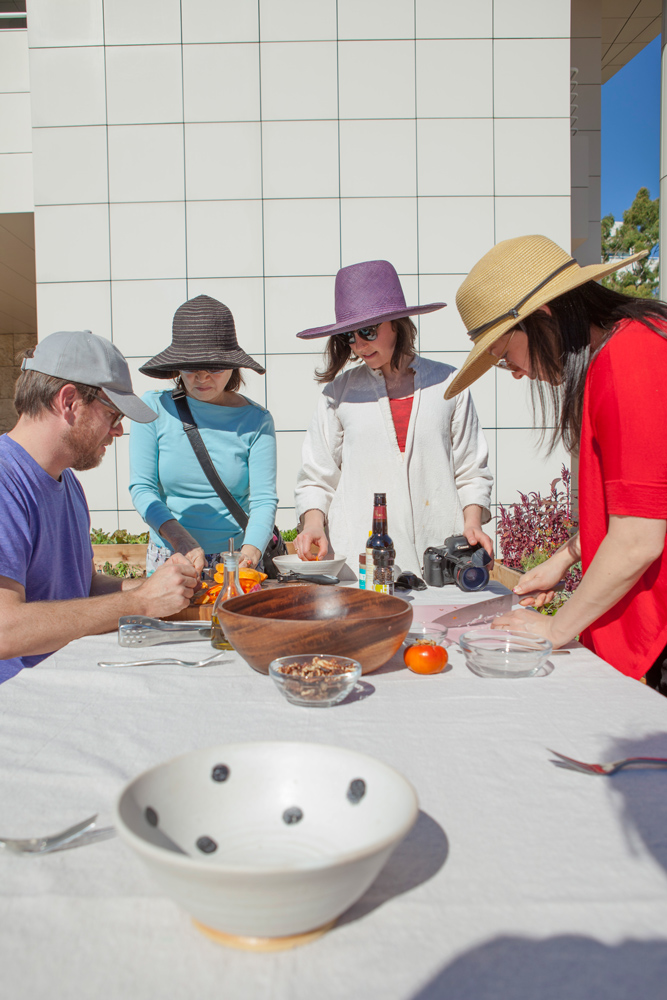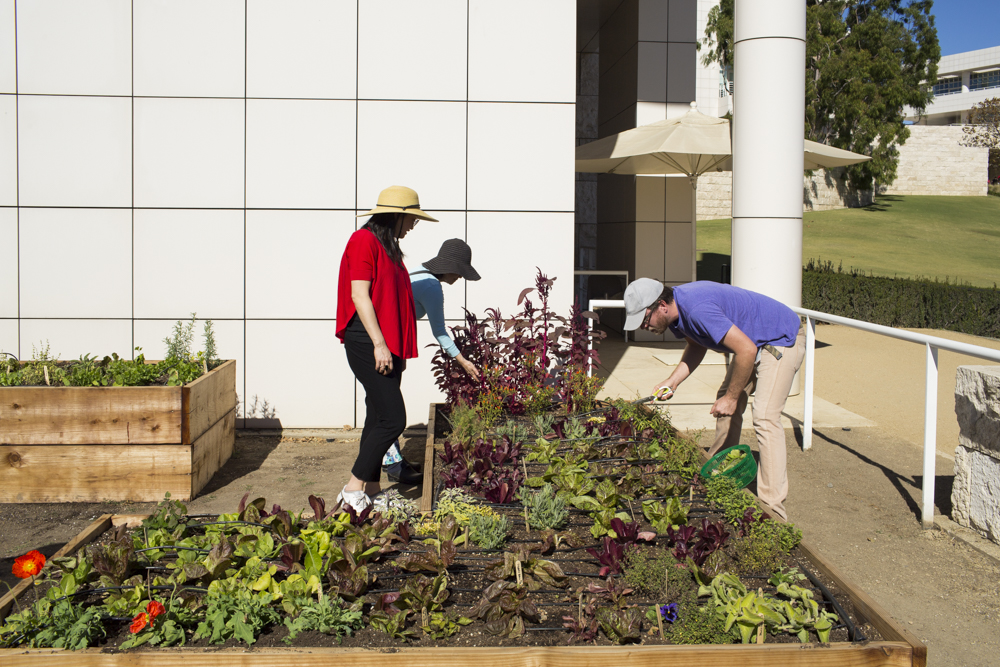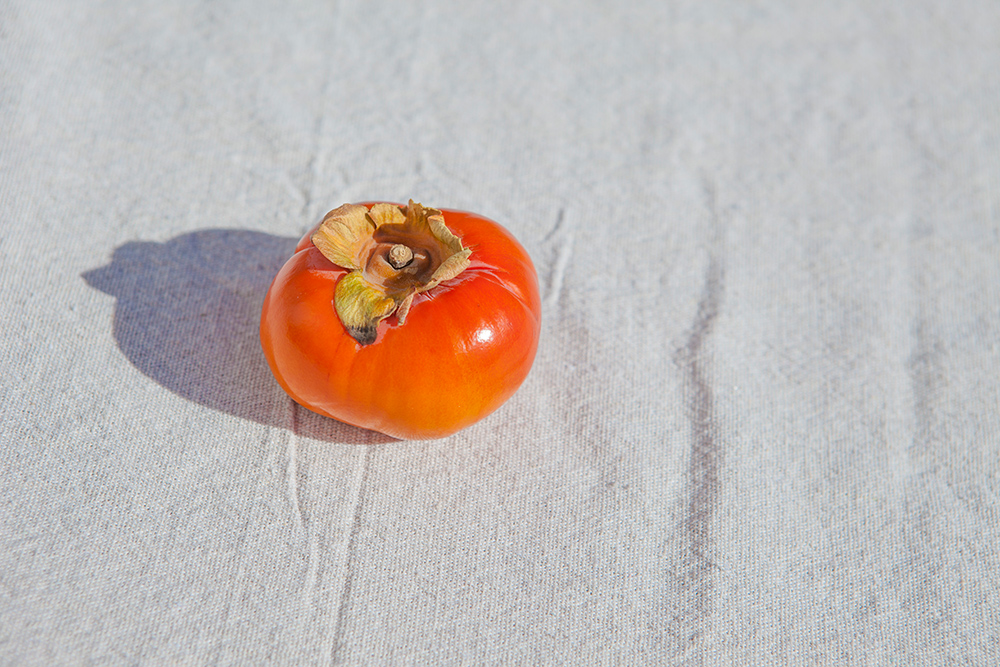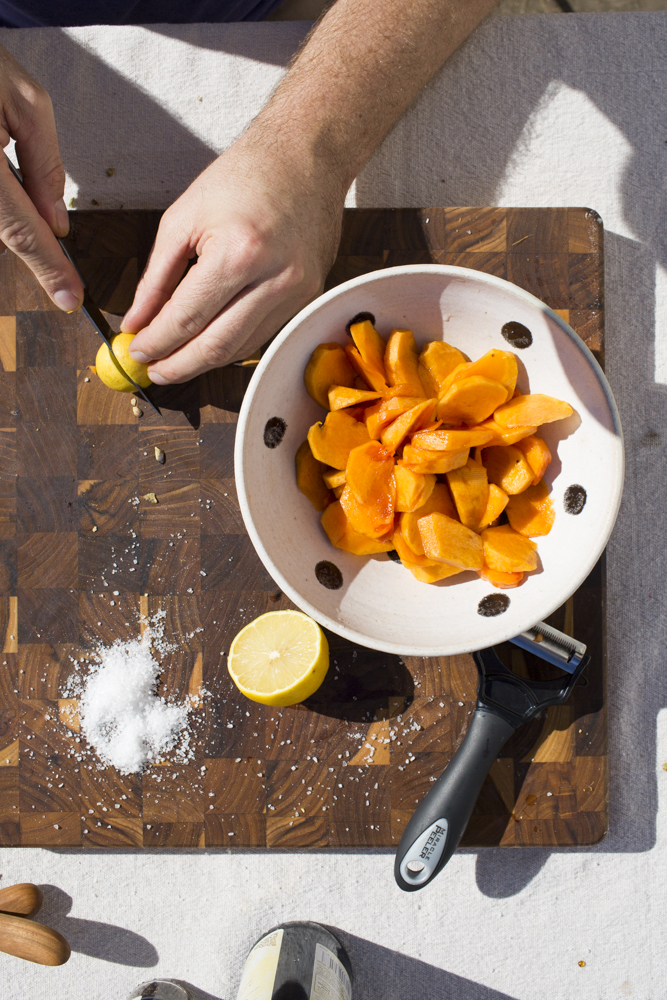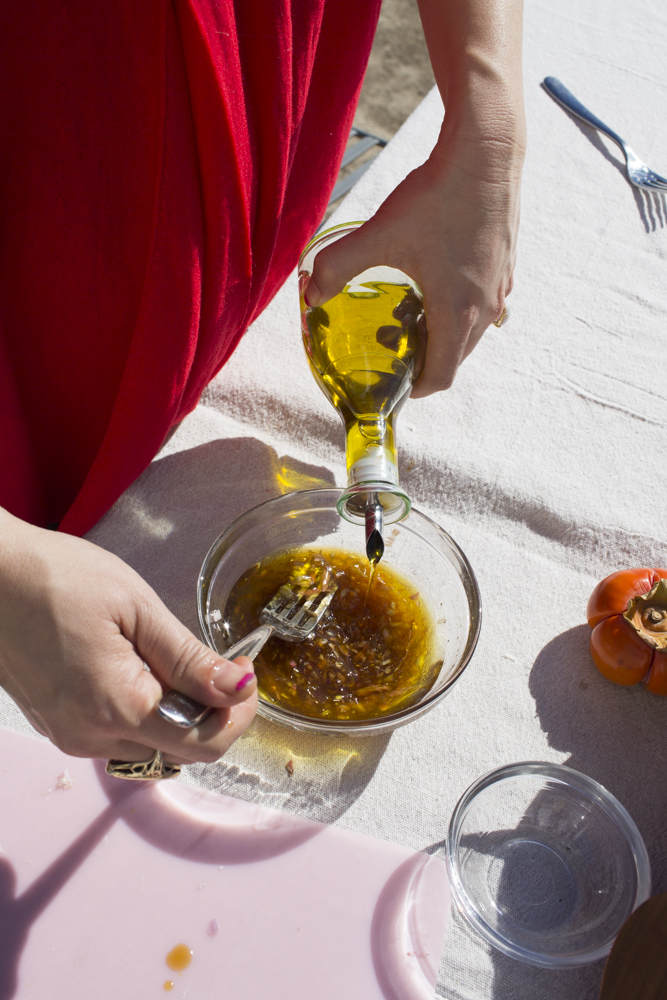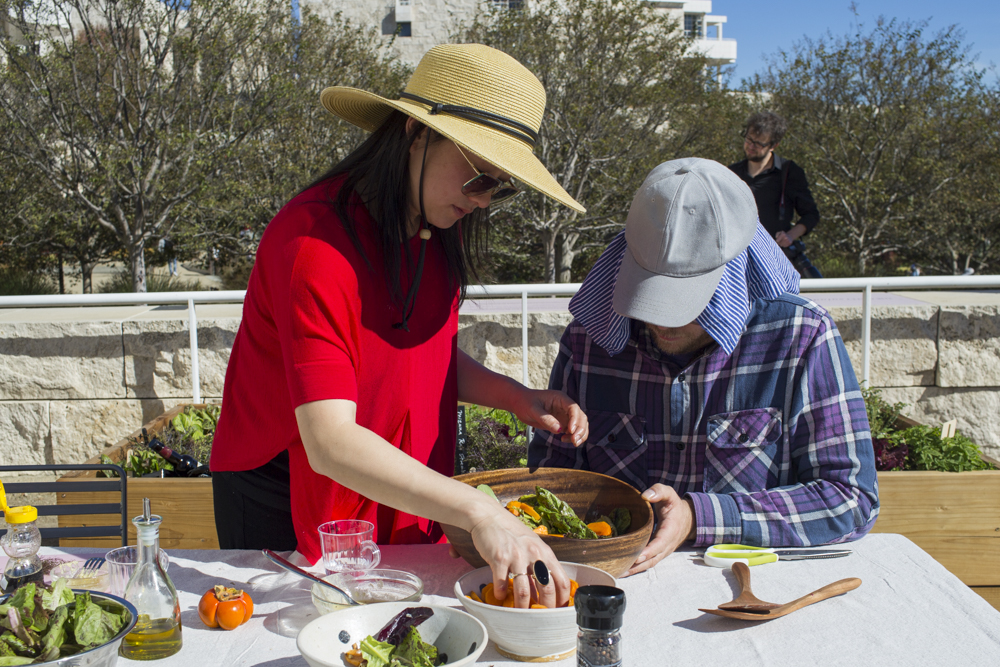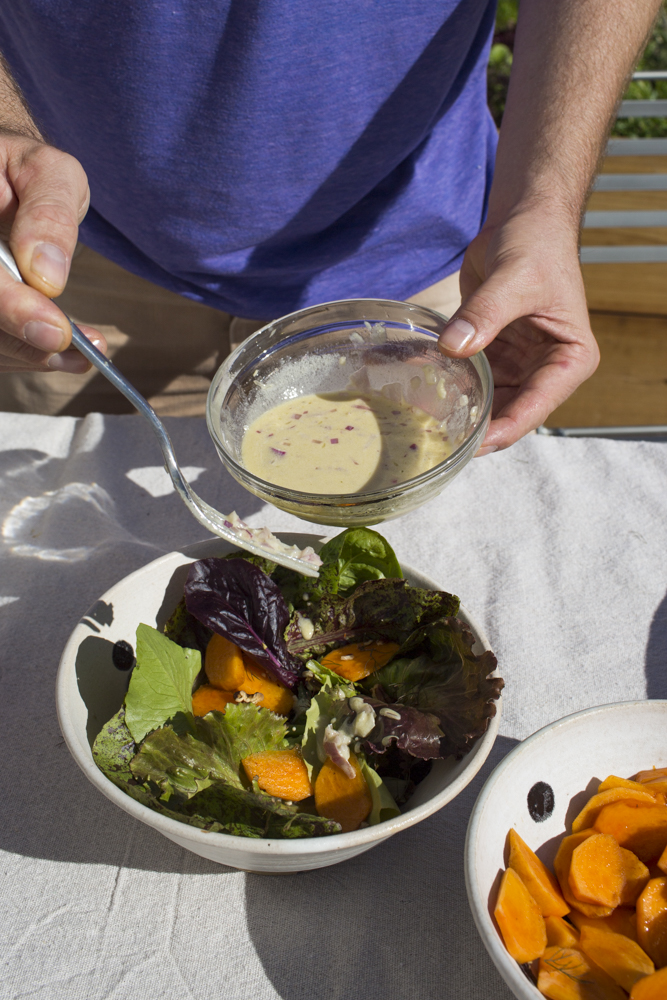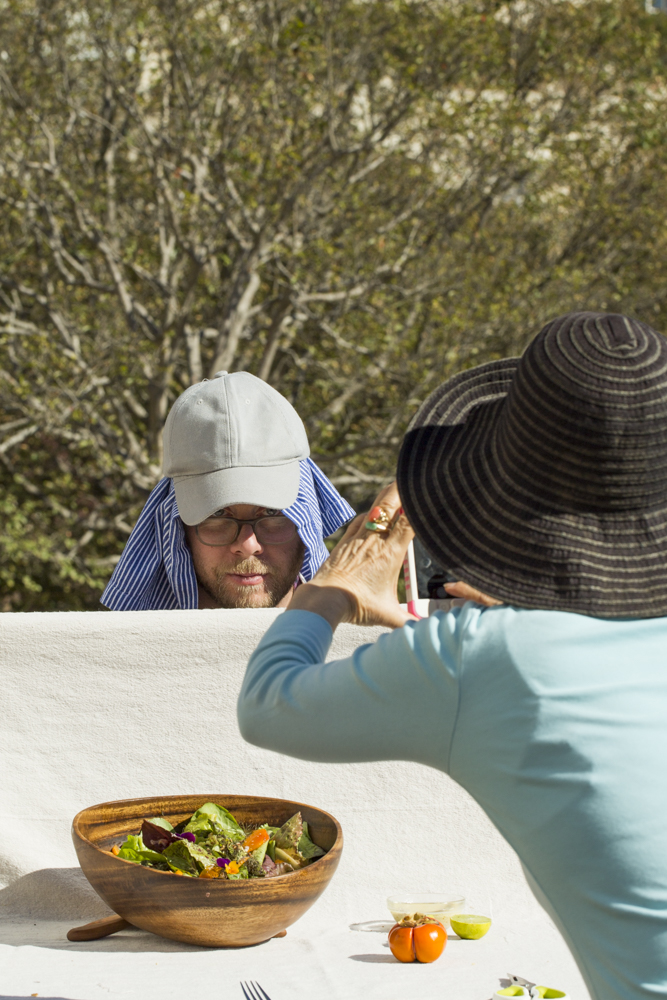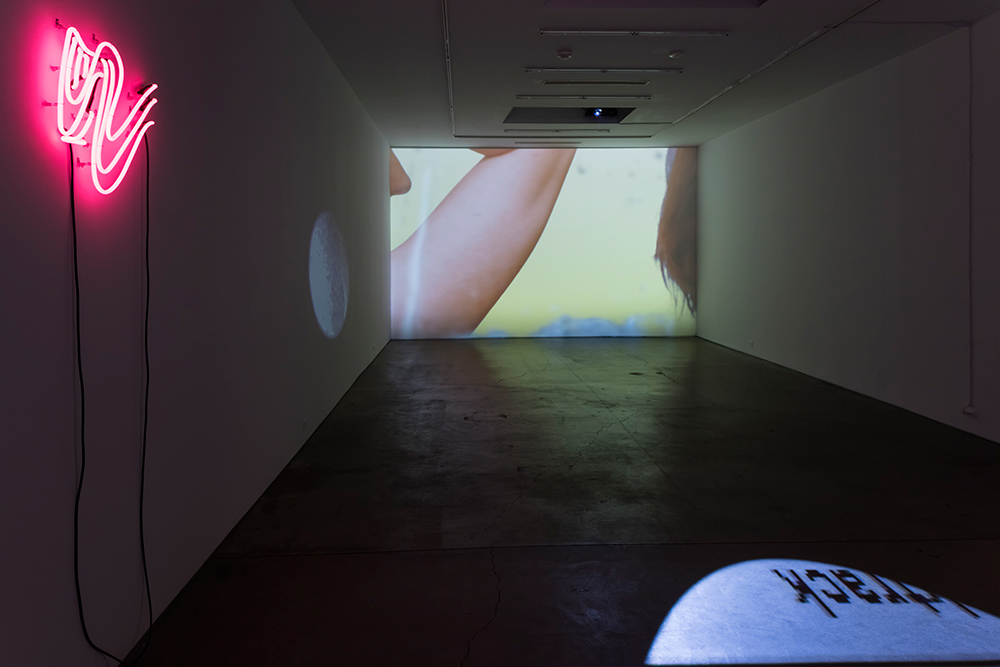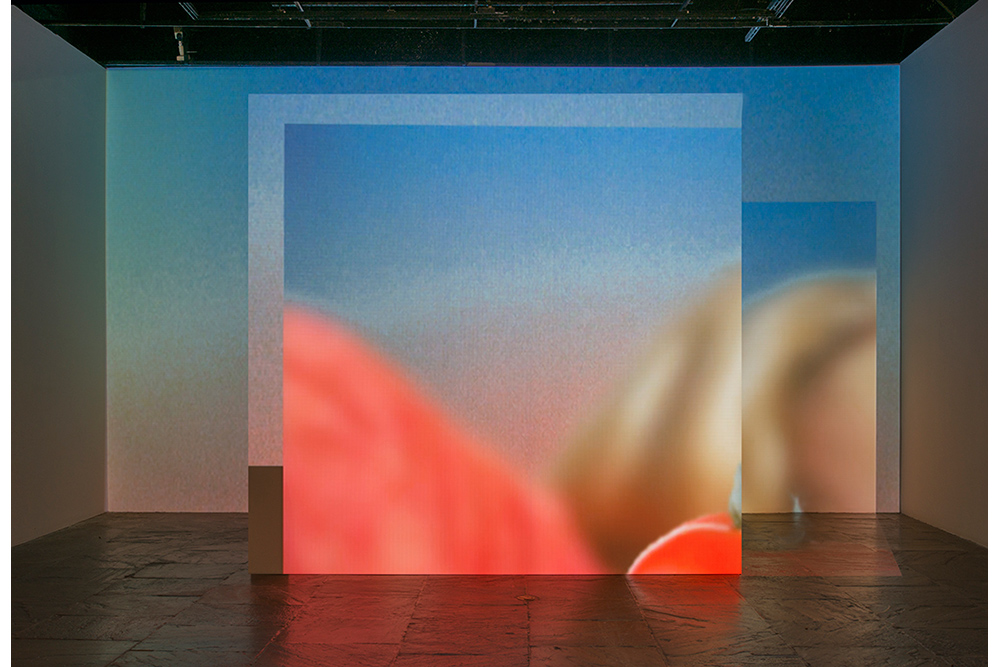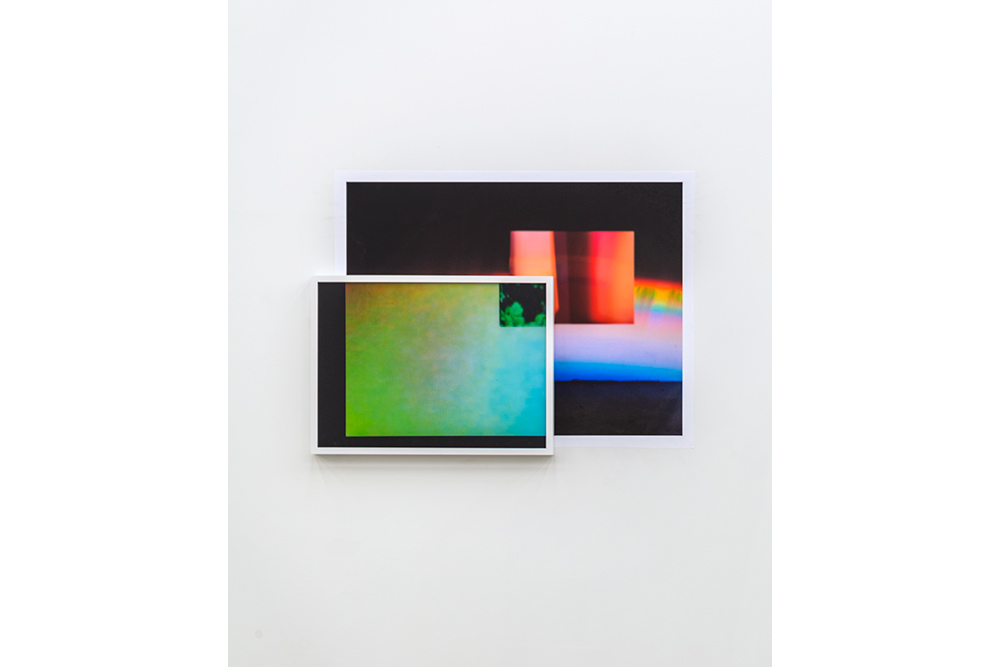Mixed Greens, Fuyu Persimmon, Toasted Pecans and Lime-Tahini Dressing
Victoria Fu’s Persimon and Toasted Pecan Salad
POSTED UNDER
- California,
- Fall,
- Getty Salad Garden,
- los angeles
INGREDIENTS
- lime,
- maple syrup,
- pecan,
- persimmon,
- tahini
NOTES
Perfect easy salad to make use of seasonal persimmon. My preferred brand of tahini is far and away Soom. It is pretty thin and never clumps at the bottom, making it an ideal consistency for salad dressing.
RECIPE
DIFFICULTY
EASY
SERVES
4
PREP TIME
5 MINS
Dressing
-
1tbstahini
-
1tspwater
-
1tbslime juice
-
1tspmaple syrup
-
1tbsolive oil
-
1/2shallot, minced
Salad
-
10ozmixed greens
-
salt and pepperto taste
-
1fuyu persimmon
-
1/2cuppecans, toasted
POSTED UNDER
- California,
- Fall,
- Getty Salad Garden,
- los angeles
INGREDIENTS
- lime,
- maple syrup,
- pecan,
- persimmon,
- tahini
When I asked artist Victoria Fu to make salad with me at the Getty Salad Garden, I did not expect her to come with her family in tow. A lovely surprise, and just the kind of thing I like to see happen in that space. Victoria brought along her husband, painter Matt Rich, and her mother, Stella Fu. This was not only a great excuse to spend time with her loved ones, but it soon became apparent that these three had collaborated around mealtime before. When the Fu/Rich clan get into the kitchen, Victoria herself often takes on the salad, comfortably combining distinct ingredients, layering flavors, and working towards an appealing composition. I am going to go out on a limb here and draw a parallel between this method of preparing food, and the approach Victoria takes to her artistic media of choice — film and video installation. Her works are layered, from the variation in projected surfaces themselves to the way she pairs her own footage with stock or archival material. In the end, the works become an immersive whole that are familiar yet strange, and just seem to magically cohere in colorful harmony. If someone could describe just one of my salads that way, I would die a happy woman.
Victoria Fu In Her Own Words
JS: You guys seem to have assumed your own distinct and particular roles in the kitchen. How did that come to be?
VF: Probably over time by taste and trial and error! We tend to have our own distinct visions of the meal, so one of us will sous-chef while the other runs the kitchen. Also, we’ve fallen into our strengths—Matt is great with meat and fish and I’ll deal with the veggies and legumes.
JS: You said you are not much of a cook, but you do make a good salad. Is salad making not considered “cookery” in your mind?
VF: I love combining flavors, colors, and textures, which is totally “cookery.” But, there is a whole aspect to cooking that I tend to neglect that has to do with “cooking” by applying heat and other processes.
JS: As an artist couple, you must influence one another’s work profoundly. Matt said he, “brought color to Victoria’s world.” Do you have particular approach or guiding principles when it comes to color? Can you tell me a bit about your future collaboration?
VF: I think we have commonalities in our work that maybe aren’t readily apparent at first glance. We are both converging in sculpture from our respective corners of painting and video, so my guess is some meeting point that is object-based, abstract, and colorful!
JS: You both teach at schools that are not specifically art schools. How does this effect the material you present to your students or your expectations, assuming the majority of your students are not preparing to navigate the commercial art world.
VF: For my part, the things I emphasize in teaching are ideally applicable to life: navigating, with awareness and criticality or the visual material around us from movies to commercials to design. Sometimes students who are not aiming to become artists are more open to seeing and more apt to decode their environments.
JS: What are you looking at, reading about, obsessed by inside or outside of the studio? What is your “salad,” per say?
VF: Looking at and reading about contemporary art takes up a huge chunk of my free time. Within that, over the past year I’ve been very involved in a conversation with other artists and scholars about the influence of haptic touchscreens on artists’ film and video, which means I’m always on the lookout for texts and artists that are part of that, even inadvertently. Also, teaching a film class this semester has me watching movies again. I’m excited to see Todd Haynes’s “Carol”, Apitchatpong Weerasethakul’s new film “Cemetery of Splendor,” and probably a bunch of silly holiday movies.
